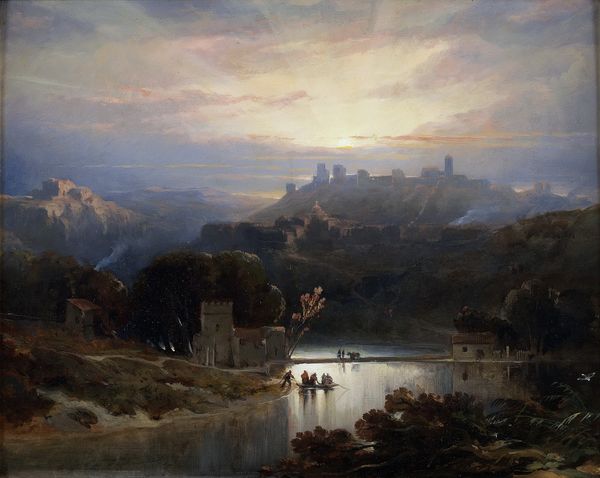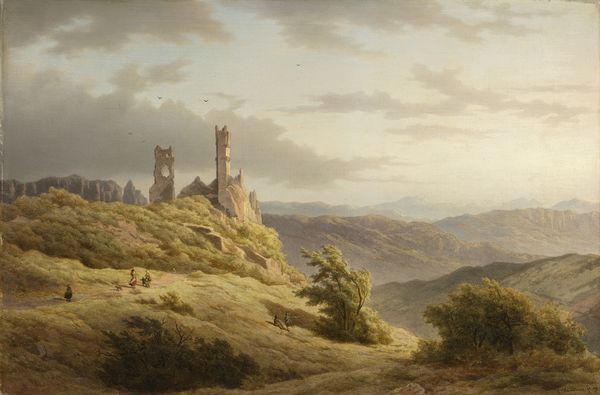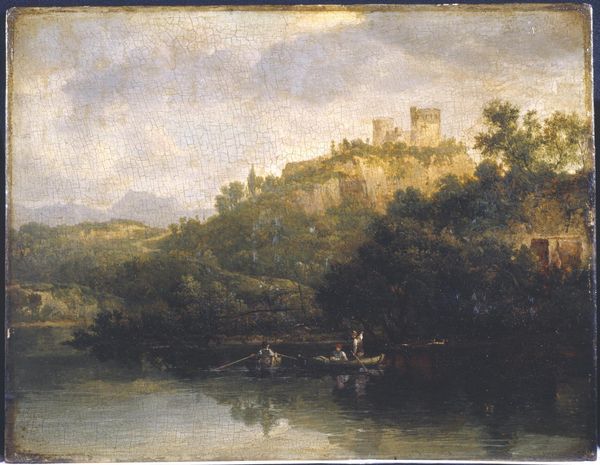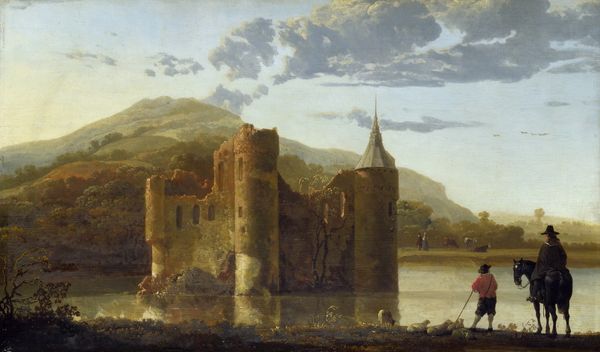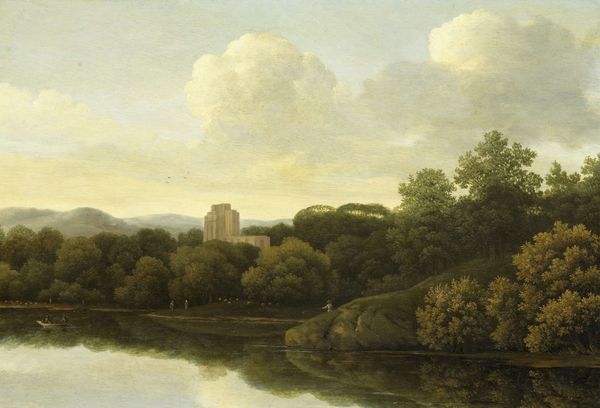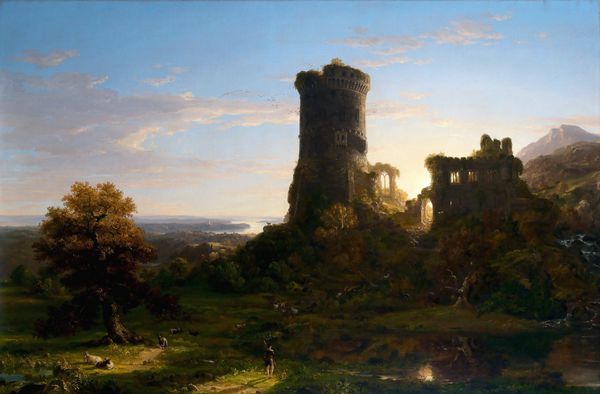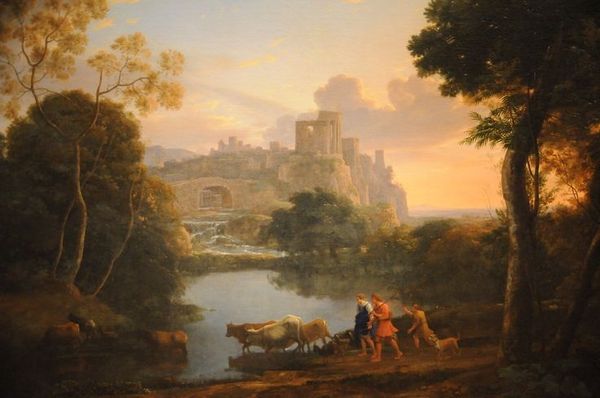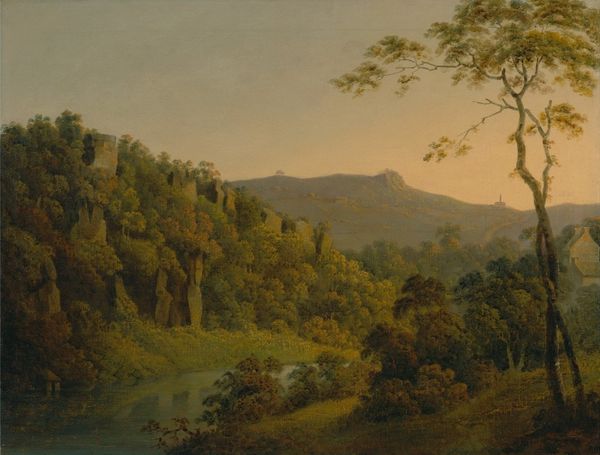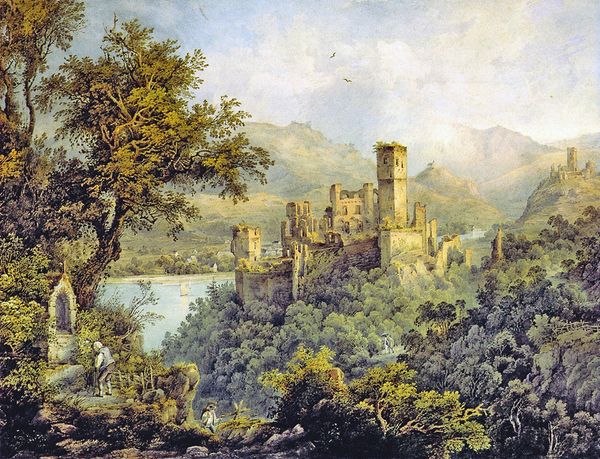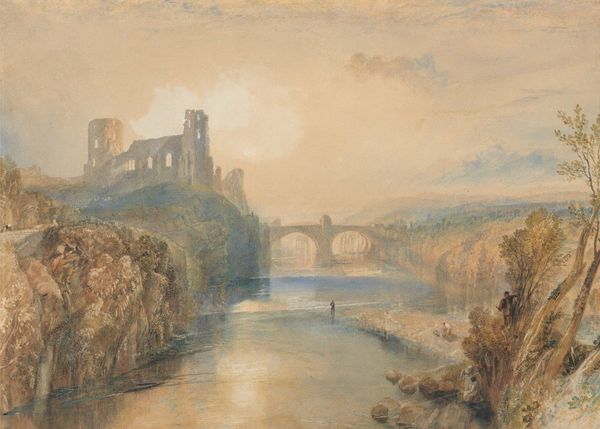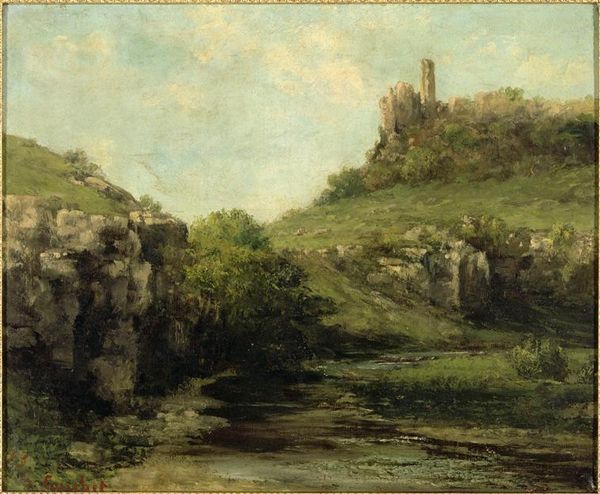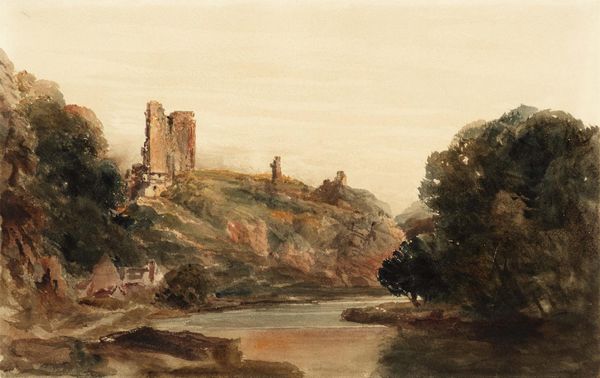
Copyright: Public Domain: Artvee
Editor: Here we have Johan Christian Dahl’s "The Castle Ruin at Tharandt," painted in 1819, rendered in oil on canvas. It’s a pretty classically Romantic scene…a ruined castle, very picturesque. But there's also a subtle tension in the air; not quite melancholic, but maybe something a little…unsettled? How do you interpret this work? Curator: The unsettled feeling you’re picking up on is fascinating, and likely intentional. Romanticism often grappled with the complex relationship between nature, history, and human progress. Consider the power dynamics inherent in a ruined castle next to a still vibrant church. What narrative do you think Dahl might be building around institutional power versus the symbolic ruin of the feudal system? Editor: I guess I hadn’t considered that aspect of it, that this landscape is political. The castle used to hold so much power, but the church is still standing…it’s like a statement on changing structures. Curator: Precisely. Dahl's positioning isn't just about aesthetics; it's a commentary. The landscape itself becomes a stage upon which shifting social and political orders play out. And who inhabits that stage? Note the peasants in the foreground. How do they figure into the narrative of this evolving landscape? Editor: They're dwarfed by everything, but present, still working the land even amongst these massive shifts. Curator: Indeed. And Dahl’s choice to include them makes a powerful statement about continuity, about who ultimately endures even as empires rise and fall. It forces us to consider whose stories are being told and whose are being erased from the history books. Editor: So it’s not just a pretty picture; it’s a prompt to consider historical forces and the everyday lives they impact. Thanks, that gives me a whole new way of looking at landscape paintings! Curator: Exactly. Art provides us with lenses to deconstruct, question, and understand the complex layers of the human experience within broader cultural and historical contexts.
Comments
No comments
Be the first to comment and join the conversation on the ultimate creative platform.
